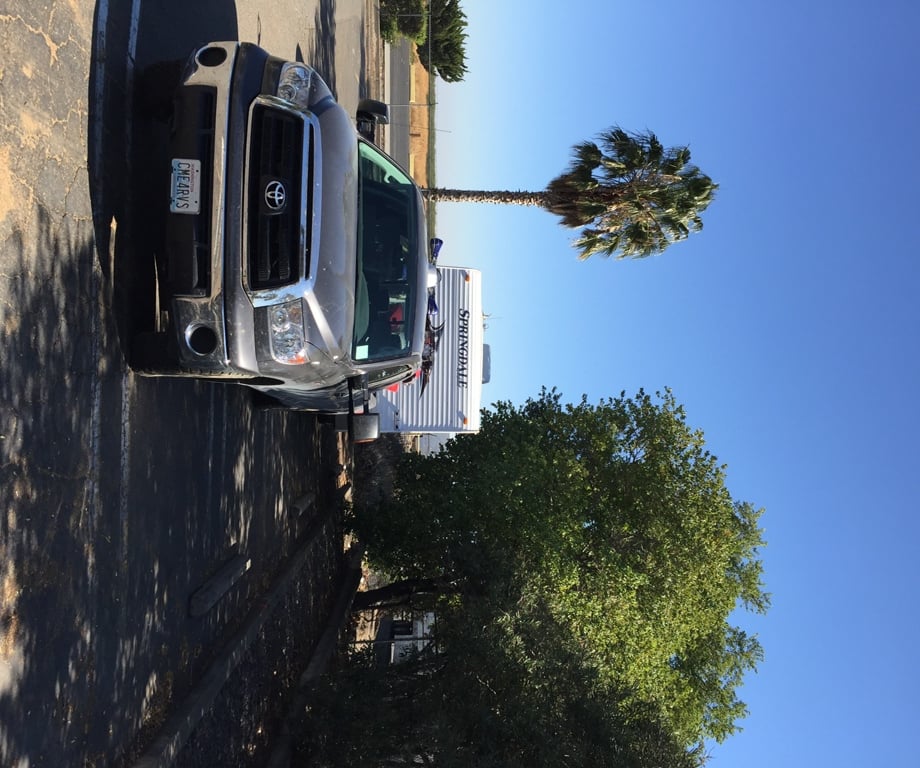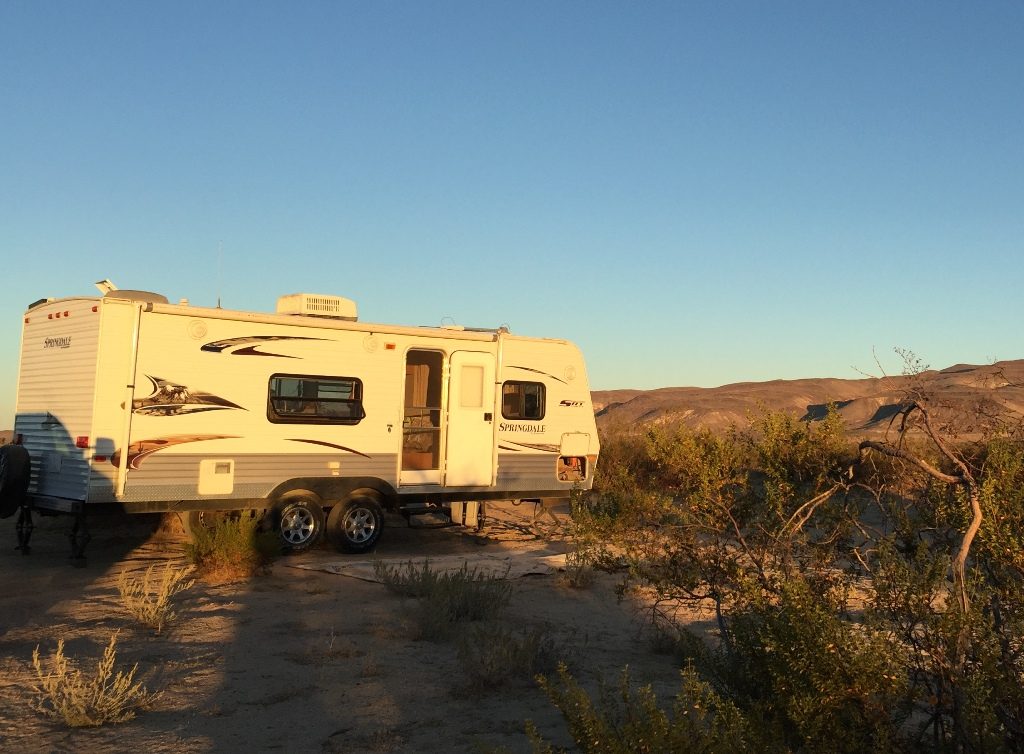Many RVers advocate driving no more than a set distance or getting to camp by a set time on days they travel, like 200 miles or 2pm.
I wholeheartedly agree that RVers should set limits on how much they drive each day to keep the experience enjoyable, but what do you do when you prefer boondocking and your known camp for the evening is out in the open on a hot day?

Taking a shade break.
Instead of arriving at the boondocks in the middle of the afternoon when the temperature is high and there are likely no services, spend some downtime along your route in the shade. Look for a nearby urban area where it is cooler and there are amenities like cell service, WiFi, retail stores, parks, etc.
How do you know where these shady places are? Often times you can spot them as you enter town. Common places are city parks, schools (out of session), or around the treed perimeter of box store parking lots or churches.
Other times you will need to get out your mobile device, open up Google Earth, and scan satellite images of the area where you want to take your shade break. Keep an eye out for mature trees, tall buildings, or steep hillsides that cast big shadows.

Arrive in the shade and relax.
Once you find a location, note the time of day and where the shadows should be falling during your stop. Remember the shadows you will be viewing on Google Earth may not be in the same spot when you park there.
A good rule of thumb: shadows will be due north of the item casting the shadow at noon each day, moving to the northeast as the afternoon progresses.
Upon arriving at your shady location, you can enjoy a walk, do a little shopping, call a loved one, do some prep work for dinner, update your Facebook page, or take a nap. As the cool of the evening approaches you can then head back out on the road freshly rested for the drive to your campsite in the boondocks.
Enjoying relaxing travel days, just another adventure in RVing!

This is so blindingly obvious that I honestly never thought of it before!!!! Thanks for pointing it out to a second year traveller!
Schools are bad idea, I tried that and almost end up in jail, city parks is not either unless you like police raids and interrogation, they think you are some sex offender or pedophile, churches call cops too, I dont recommend. Big box stores are ok if you dont mind some homeless guy knocking on your door every 5 minutes. People complain in urban areas for taking too much space. I rarely RV these days.
Nomad…I have not had the problems you have. When I do, I will make adjustments, but hopefully I will NOT want to quit R.V.ing. Sounds to me like you need to quit though. Hope you find something else that has fewer problems for you.
What geographical location is this written about? I do not understand about “hot days” and shadows “due north at noon”. If it is hot outside, there will not be shadows at noon. If it is hot, the sun is directly overhead, at least in the southeastern U.S. Afternoon shadows are found on the East side of structures in the warmer months with the afternoon sun in the West. Afternoon shadows of significance may be found on the north side of structures during the four coolest months Nov, Dec, Jan, & Feb as the sun’s angle of inclination dips into and then back out of the southern sky with the winter solstice being the peak (or lowest angle). I’m trying to think where / when the article’s “shadows” might occur???